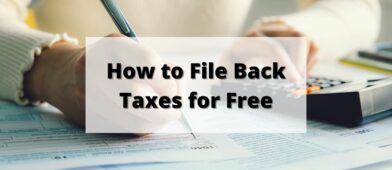If you received a state stimulus check in 2022, you may be wondering, as you prepare your taxes, if those payments are considered income and thus taxable at the federal or the state level.
Fortunately, the IRS issued a statement in early February that will help answer your question.
In short, most of the payments are considered “general welfare and disaster relief payments” and may be excluded from income for federal income tax purposes.
In some states, they are considered a refund of state taxes paid and excluded from income for federal tax purposes unless you received a tax benefit in the year the taxes were deducted.
Most payments are not going to be taxed at the federal level.
Let’s dig into the states:
Table of Contents
States that issued General Welfare and Disaster Relief Payments
The IRS determined that the following states issued stimulus checks that are considered General Welfare and Disaster Relief Payments and excluded from federal taxation under the the General Welfare Doctrine or as a Qualified Disaster Relief Payment:
- Alaska – Only for the supplemental Energy Relief Payment received in addition to the annual Permanent Fund Dividend.
- California
- Colorado
- Connecticut
- Delaware
- Florida
- Hawaii
- Idaho
- Illinois – issued two payments, one was a refund of taxes and one was for disaster relief
- Indiana
- Maine
- New Jersey
- New Mexico
- New York – issued two payments, one was a refund of taxes and one was for disaster relief
- Oregon
- Pennsylvania
- Rhode Island
For specific details on each state and the payment (especially for Illinois and New York where they issued one refund and one disaster relief payment), check this chart on the IRS website.
Specifically, the IRS is instructing taxpayers to exclude the amounts of the payments from their tax return and the “IRS will not challenge the treatment of the 2022 payment as excludable for income on an original or amended return.”
States that issued Refund of State Taxes Paid
For these states, the IRS determined that the payments were a refund of state taxes paid and if you did not receive a tax benefit, then that payment is not included as income for federal tax purposes.
Those states include:
- Georgia
- Massachusetts
- South Carolina
- Virginia
If you satisfy the conditions, then again you’re supposed to exclude it from your return.
Minnesota Frontline Worker Pay
Residents of Minnesota may have noticed their state not listed on other list – over 1 million frontline workers received an emergency payment of $487.45 as part of Frontline Worker Pay.
Since Minnesota was not included in the list, they have instructed recipients to include it on your federal tax return. You will not get a Form 1099 because the payment was under $600.
Other payments
As for any other statement payments, such as the annual payment from Alaska’s Permanent Fund Dividend, those are all taxable as usual.




Leave a Comment: